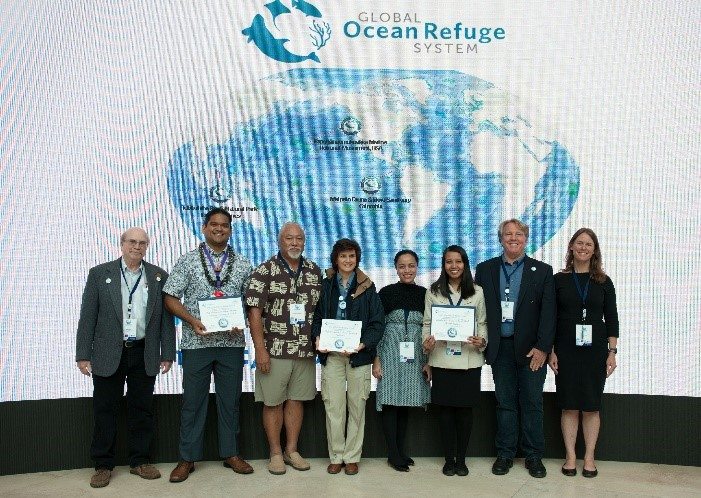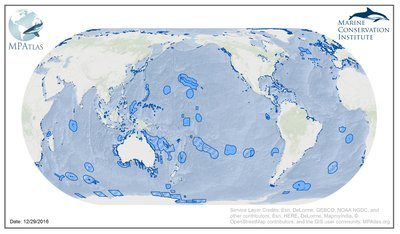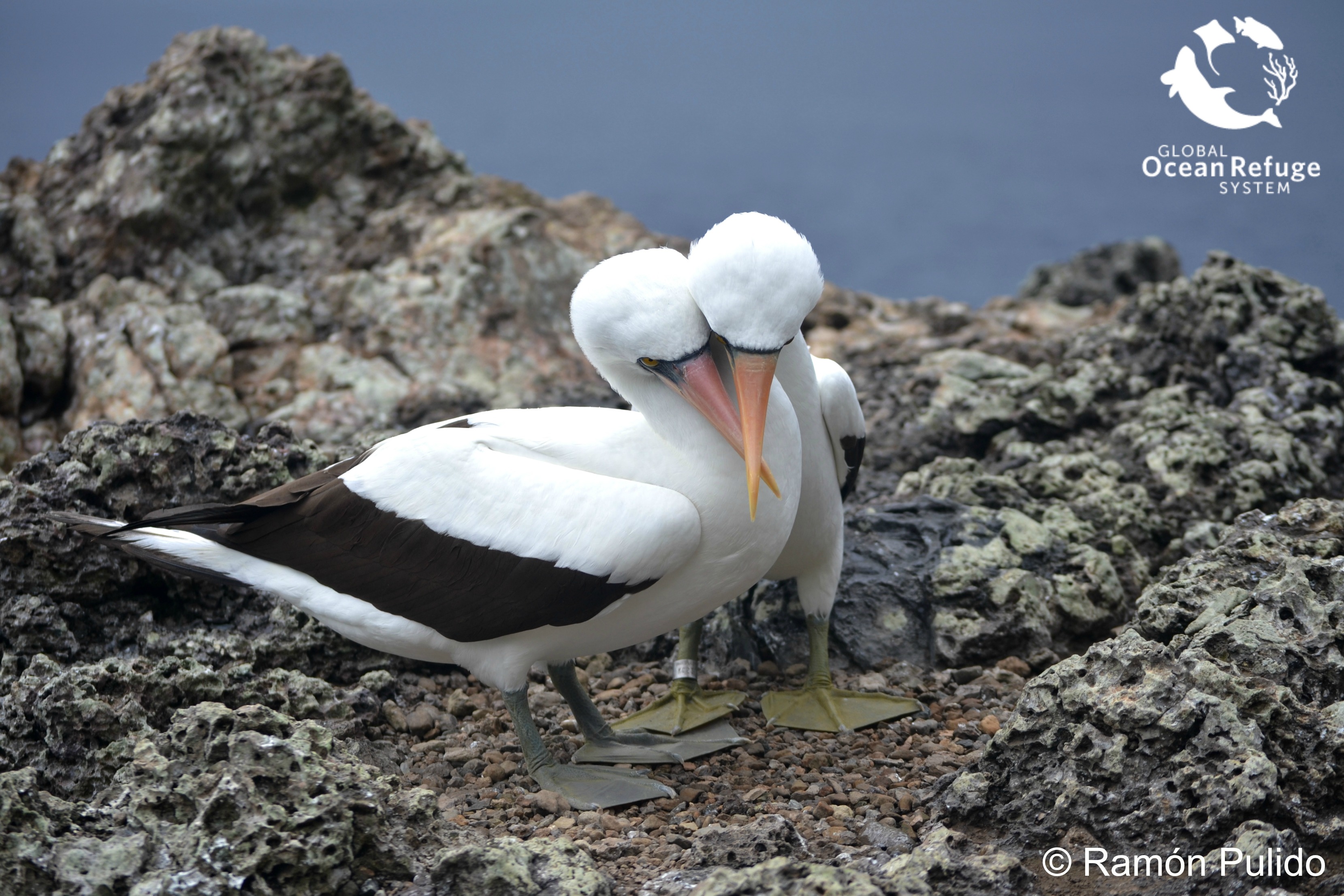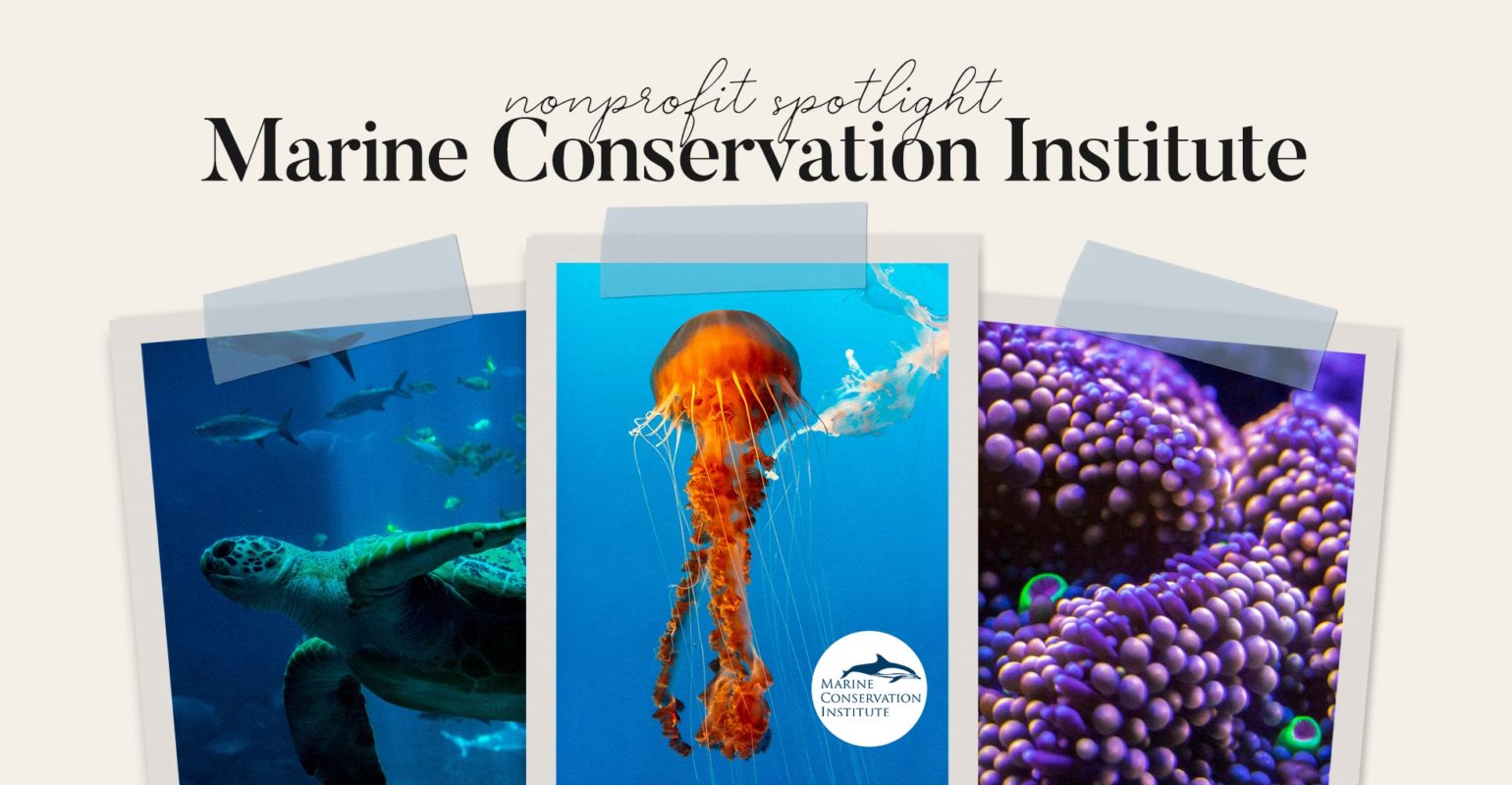These responses were provided by Marine Conservation Institute’s Communications Coordinator, Matt Coomer. Thank you for taking the time to tell us about your organization!
What is the Marine Conservation Institute
The Marine Conservation Institute is based in Seattle, Glen Ellen (Bay Area CA), and Washington D.C.
Since Dr. Elliott Norse founded Marine Conservation Institute in 1996, we have been a major player in efforts to save our ocean.
We help bridge the gap between scientists, who understand marine ecosystems, and policymakers who determine their fate.
In 2000, at our urging, President Clinton called for a national system of marine protected areas, or MPAs.
In 2006 and 2009, we built the scientific support for President Bush to establish three colossal MPAs in the tropical Pacific Ocean. This move was a game-changing moment for conservation: it marked the first time a vast ocean area was strongly protected from fishing – a significant impact that humans have on marine ecosystems. This momentum led to more strong MPAs being created in recent years.
Since seeing marine conservation biology become a vibrant science worldwide, we have shifted our attention to increasing the quantity and quality of protection for the ocean’s best places.
To realize this dream, we launched a major initiative, the Global Ocean Refuge System (GLORES, pronounced “glories”). GLORES is dedicated to building a network of marine reserves that strongly protect 30% of the global ocean. It is a collaborative effort working to save marine life and protect biodiversity through effective measures on the water.

We are also dedicated to providing the world’s most accurate assessment of MPA coverage and strength through the Atlas of Marine Protection, or MPAtlas.org.
As countries race to reach globally established levels of marine protection, it is important that MPAs be planned and managed to achieve real conservation benefits. Because some places are called MPAs but still allow destructive activities like fishing and oil development, MPAtlas.org has gained widespread recognition for assessing protection on the water, rather than simply showing declared space.
Our interactive map and analyses offer a true picture of marine protection progress, showing successes and how far we still have to go.
What Is The Organization’s Overall Mission?
Our mission is to secure permanent, strong protection for the ocean’s most important places.
What Are a Few Goals Your Organization Has Been Focusing on This Year?
This year, our team has been focused on fighting attempts to remove protections for U.S. marine national monuments and sanctuaries, tracking new MPA developments on the Atlas of Marine Protection, and welcoming our first Global Ocean Refuges to the GLORES network.
We are also involved in raising public awareness about the California seamounts, which are underwater volcanoes and deep-sea mountain ranges off the coast that support rich, fragile ecosystems. These undersea mountains are home to ancient corals, delicate glass sponges, and chemo-synthetic communities. The more people we reach about their natural value, the more likely it is that they can be protected in the future.
Our scientists are also busy researching other vulnerable ecosystems in the deep sea and ways to protect their biodiversity as well as maintain their resilience.
Can You Discuss Some of Your Major Successes
Our biggest recent success was being awarded the first Global Ocean Refuges at the 4th International Marine Protected Areas Congress (IMPAC4) in Chile.
Our distinguished GLORES Science Council used science-based criteria to evaluate promising MPAs and found that three sites met our strictest standards for protecting marine biodiversity:
- Malpelo Fauna and Flora Sanctuary (Colombia)
- Tubbataha Reefs Natural Park (The Philippines)
- Papahānaumokuākea Marine National Monument (U.S.)
It was our privilege to honor their conservation achievements and recognize each site with the Global Ocean Refuge Platinum award. We will continue promoting their success and help other marine reserves follow their shining example.
The Atlas of Marine Protection was also recently recognized, as National Geographic Explorer-In-Residence Dr. Enric Sala used its data to show the state of marine protection at the Our Ocean conference.
The resulting Malta Declaration was signed by prominent marine scientists from around the world and called for stronger MPAs with verifiable conservation measures, a point we strongly support and echo in our mapping work.
As nations hopefully listen to this message and create more effective MPAs, MPAtlas.org will continue showing the real marine protection situation on the ocean.

Can you share a few alarming stats that have low awareness?
We want to make everyone aware that, in spite of increasing numbers of MPA announcements, only about 3% of the world’s oceans are protected today. And, of that small amount, approximately 1.5% is strongly protected in no-take marine reserves, which is, according to leading scientists, the most effective design for protecting ecosystems.
As an example of the urgency for marine protection, 60% of coral reefs are currently threatened by human activities and it is likely that 100% of coral reefs will bleach by 2050. Our oceans are in decline and they need more protection if we’re going to stop or reverse these sad trends.
Modern boats now fish in every ice-free ocean region. Despite their new technology, some studies show that global fish catches peaked years ago and that up to 90% of large tunas and billfishes may be gone. When you mix in human-caused habitat destruction, pollution, and climate change impacts, our ocean’s ability to sustain life is threatened.
As renowned marine biologist and Marine Conservation Institute Board Member Dr. Sylvia Earle famously said, “No ocean, no life. No blue, no green. No ocean, no us.” The Global Ocean Refuge System will help us reverse the trend of ocean degradation and ensure a healthy ocean that supports the planet’s amazing biodiversity.
What can we do in our daily lives to help support your cause?
In addition to donating to our organization, we welcome the public to nominate great MPAs for Global Ocean Refuge awards and to help spread the word about GLORES.
We’re always looking for new organizations and businesses to partner with as well, so if you know another group that would be interested in collaborating on GLORES, please let us know! Also, tell your friends about the best place to find accurate MPA information, MPAtlas.org!
We always appreciate communications support online and invite you to follow, like, and share our posts:
- Twitter – @savingoceans #MPAtlas #GLORES
- Facebook – @MarineConservationInstitute
- Instagram – @savingoceans
Please consider signing up for our monthly newsletter as well!

How important are donors for the Marine Conservation Institute?
Donors are essential to fulfilling our mission and we put every dollar received to good use. Our Board Member and Treasurer Burgess Raby describes us as, “… a ‘lean and mean’ organization, with a focus on applying every possible cent of its income to its mission of securing permanent, strong protection for the ocean’s most important places.”
We especially appreciate our Ocean Guardians, donors who give over $1,000 and give them special access to our work and recognition throughout the year.
Membership in this program makes the perfect gift for any ocean lover in your life!
How has your experience been with Giving Assistant?
Our Giving Assistant experience has been great; it gives a nice return to our organization when users shop at its many popular stores.
With the holidays right around the corner, the support we receive through Giving Assistant is helpful in boosting our year-end donations. We really appreciate its focus on giving to charities and nonprofits that are working to protect our world!
Anything else you’d like to share?
GLORES will keep growing in 2018 and beyond, so please tell everyone you know and keep an eye out for new Global Ocean Refuges!

Feature photo by Bo Mancao.
Want to make recurring donations to the Marine Conservation Institute? Shop at Giving Assistant’s 3,000+ trusted brands and donate a percentage of your cash back to the Marine Conservation Institute.

